I will use this page to show my non-sudoku puzzle creation, but not all of them. I will upload only the one with backstory on it, or at least the one I'm really proud of. Every puzzles are available with online solving on Penpa+ which you can click on the title. If you wanna find more of my puzzles, you can look through my LMI profile and my abandoned Twitter/X profile.
At 2021, My friend and I host this online puzzle contest, called Kompetisi Puzzle Klasik 2021 (en: Classic Puzzle Competition 2021) and abbreviated as KPK 2021. It's the sequel of the competition I attend as participant before. However, this one consists a mixed puzzles between sudoku and non-sudoku with some exploratory mashup variant because we want to make them as conceptualized as we can. Even though we were aiming for Indonesian beginner puzzle solver, seems like we're underestimating the difficulty too much. We're laughing about how harder they are from what we actually intended. I can assure you the puzzles are not trivial (maybe even hard?) at all!
I also have an account on LMD, but I only solve puzzles that catch my eyes there.
Tapa (Cipher) - 2023/08/08
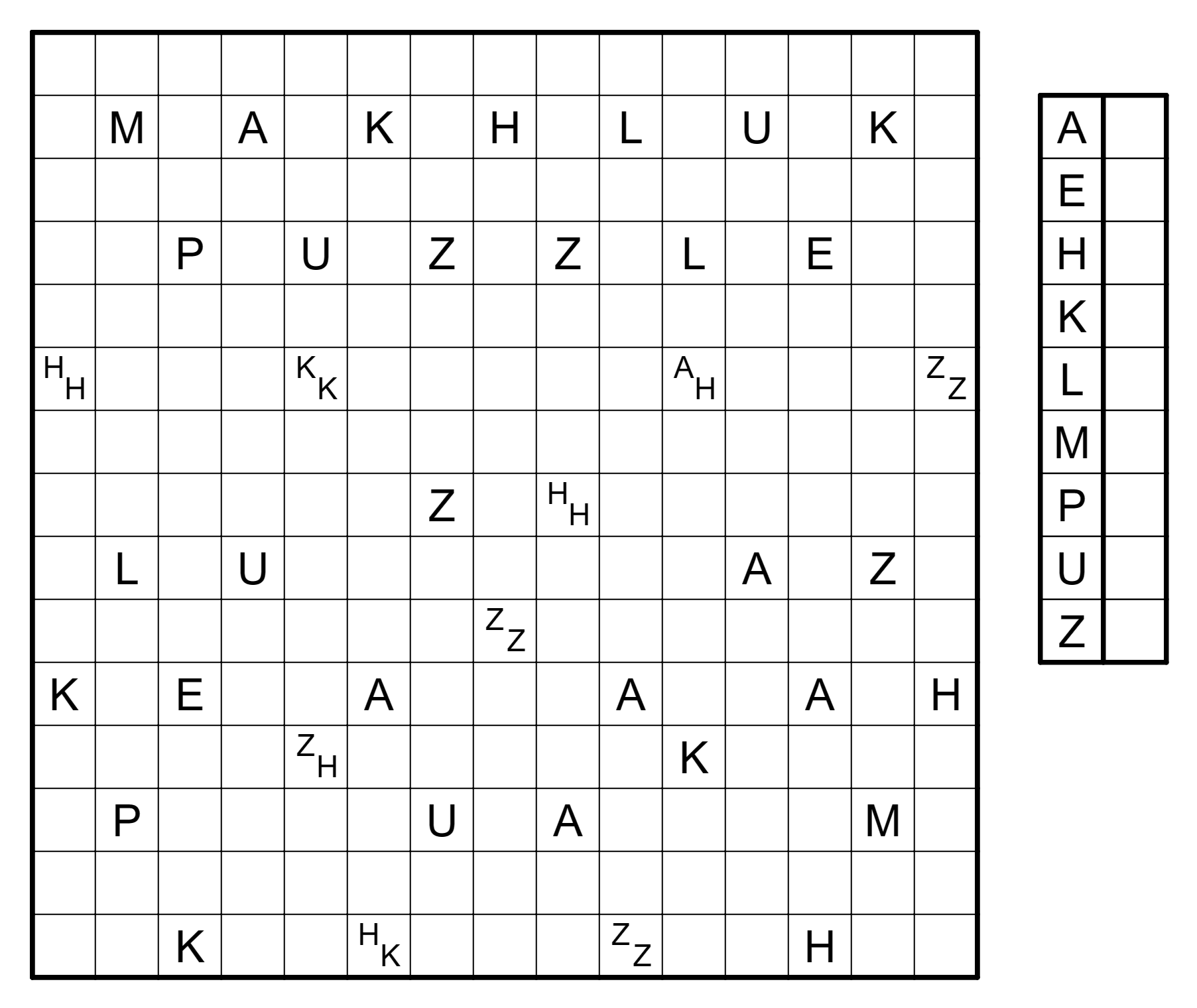
Rules: Shade some cells to make a single orthogonally connected shaded cells. Number on the cell show the length of consecutive shaded cells on its surrounding. If there are two or more number on a cell, then there should be at least one unshaded cell between the consecutive shaded cells. The numbered cell cannot be shaded and there's should be no 2x2 area that entirely shaded.
However, the numbers are ciphered into character. Each 0-8 numbers are uniquely represented by a character, so every two different character represent two different number and every same character represent same number. If 0 appear on single digit clue, treat the clue as "0" clue. If 0 appear on multi-digit clue which consists all 0, also treat the clue as "0" clue. If 0 appear on multi-digit clue which consists other number, treat the clue as if 0 never presented on that clue.
I made this puzzle on one straight night after my "Makhluk" friends and I joking about making online competition, but covered all subjects we are passionate of, pretending it to be harder than one subject only olympiad. The funny thing is we actually make it for real, and the subjects are scattered from school subject such as Mathematics and Physics to non one like Gomoku puzzle. Of course I choose pencil and paper puzzle.
I choose Tapa because it's the most familiar to me, so I believe I can make it as thematic as it should be. I also think it's not that hard to grasp the rules for new player. However, since I don't want to make it too obvious, I decided to make cipher Tapa. Fortunately the phrase "MAKHLUK PUZZLE" contains 9 letters, so I can substitute it with 0-8 numbers.
Yajilin - 2023/07/19
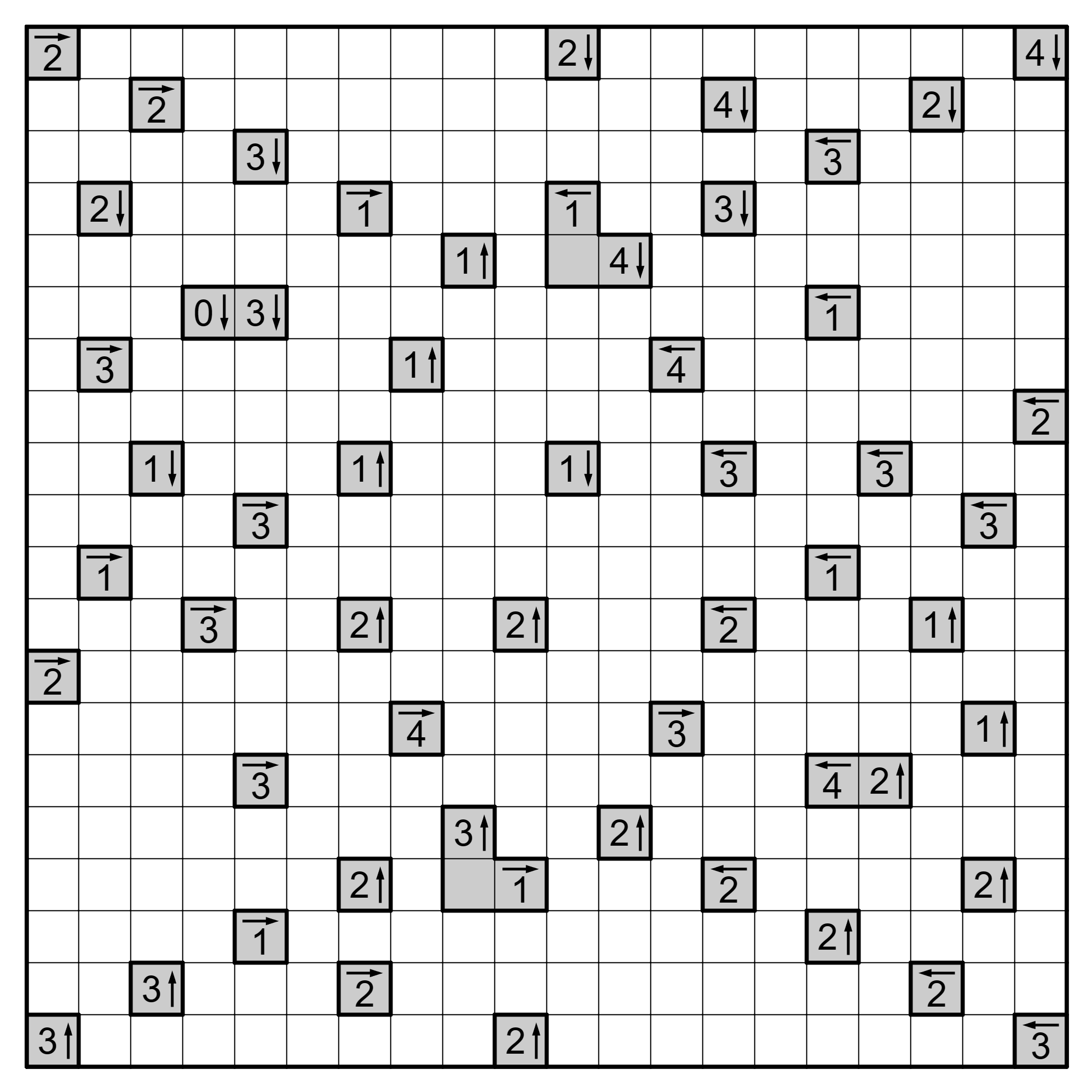
Rules: Shade some white cells and create a single closed loop that go through all remaining white cells. Shaded cell cannot share an edge with other shaded cell. Grey cell cannot be shaded nor part of the loop. If number and arrow presented on the grey cell, it's indicate how many shaded cell on the corresponding direction.
This is one of the hardest puzzle I ever setted (at least for me). I was messing around with big size puzzle and decided to create some hidden candidate removal, that turned out to be more difficult than I was planning to. The original puzzle with less clue actually still uniquely solvable, but I think it'll be too hard to be solved. So, yeah, I nerf it a bit and it's still one of the hardest puzzle I ever created.
Pata - 2023/07/12
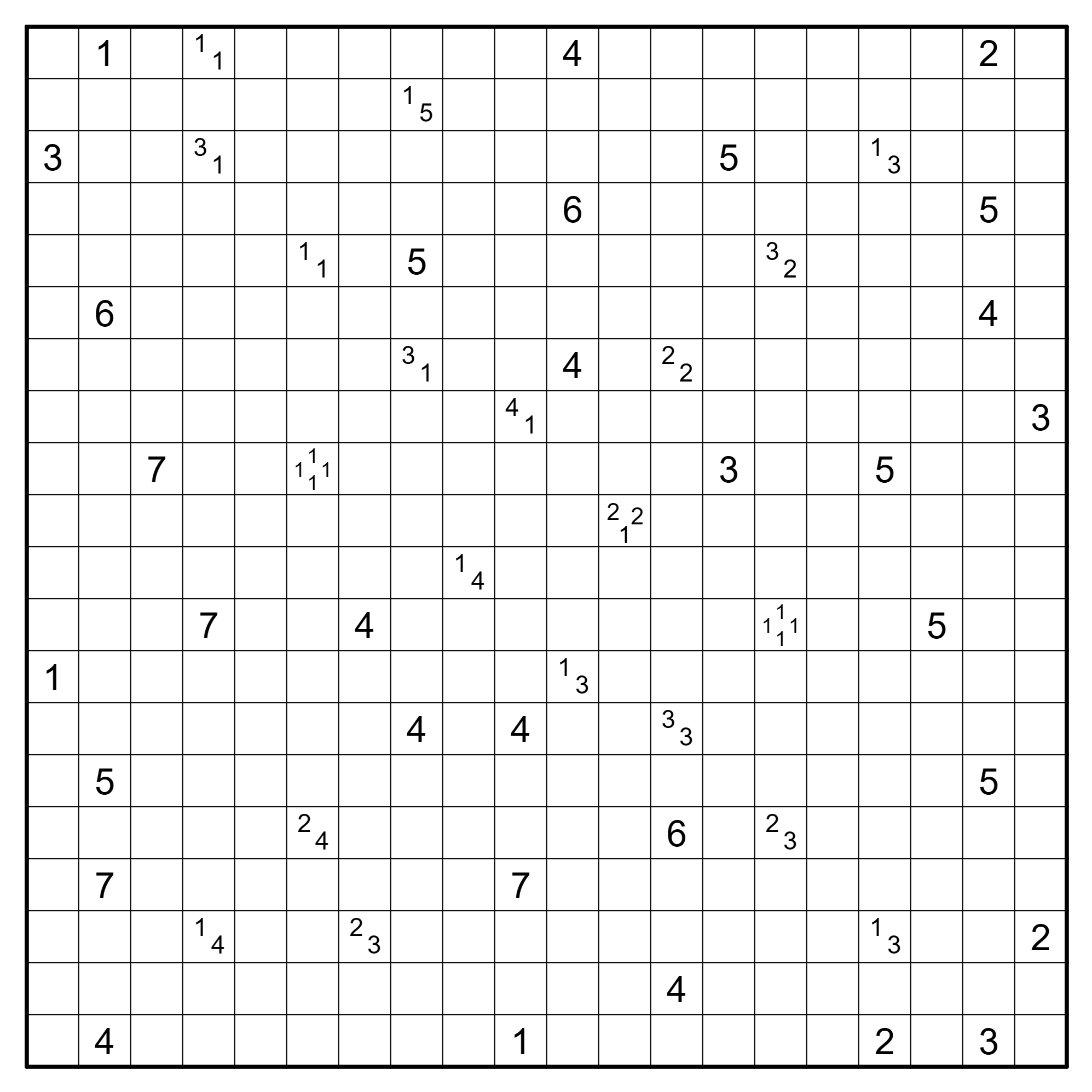
Rules: Shade some cells to make a single orthogonally connected shaded cells. Number on the cell show the length of consecutive unshaded cells on its surrounding. If there are two or more number on a cell, then there should be at least one shaded cell between the consecutive unshaded cells. The numbered cell cannot be shaded and there's should be no 2x2 area that entirely shaded.
Have I ever told you I really like Tapa and its variation? Yep, Pata included. I like how your Tapa logic can mess you up with Pata. Neverthless, I think this puzzle still approachable even for first time Pata solver.
Regional Yajilin - 2023/01/30
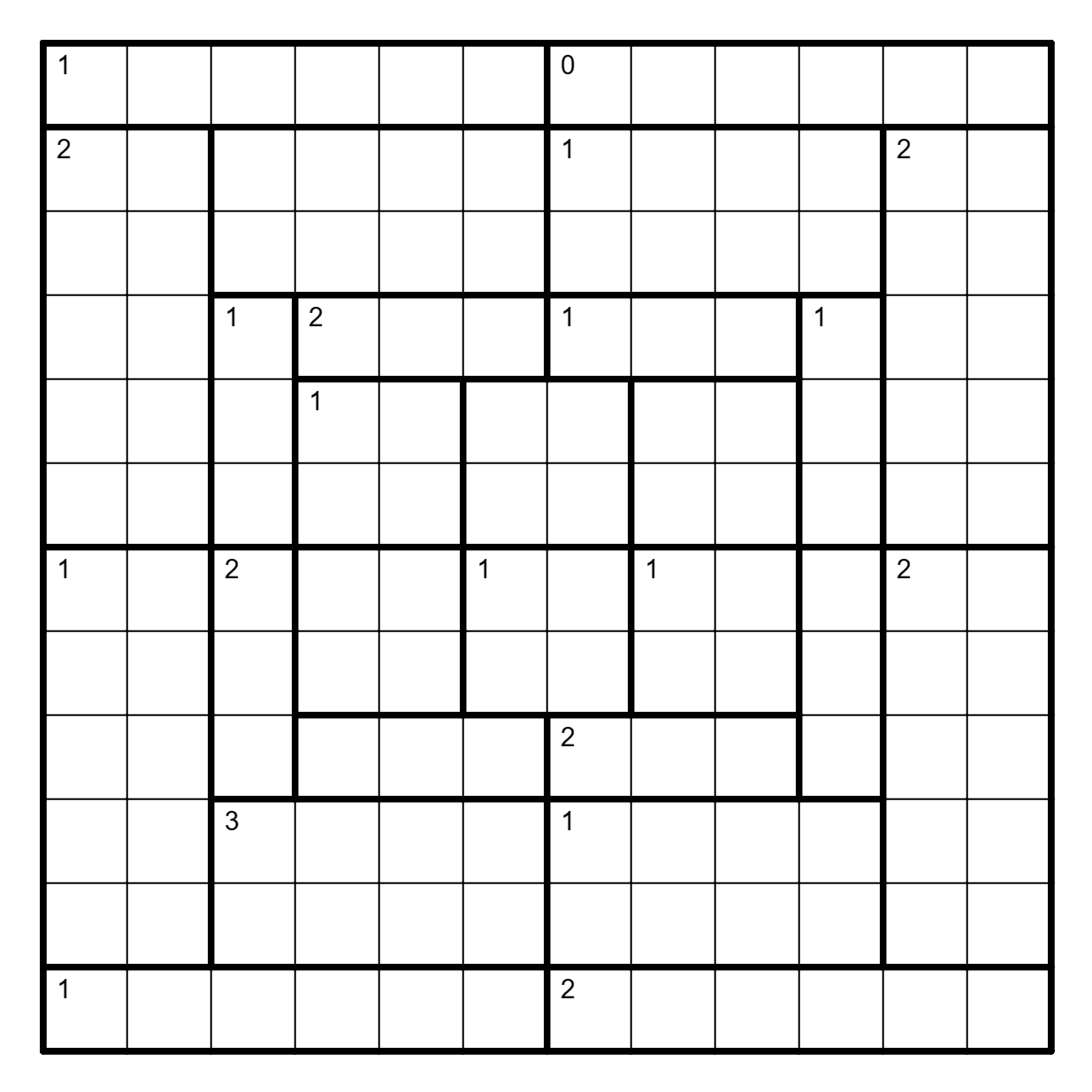
Rules: Shade some cells and create a single closed loop that go through all remaining unshaded cells. Shaded cell cannot share an edge to another shaded cells. The number on region indicates how many shaded cells in that region.
Almost straight forward puzzle, but logically, I think it's interesting. I also like the layout.
Norinori - 2022/07/30
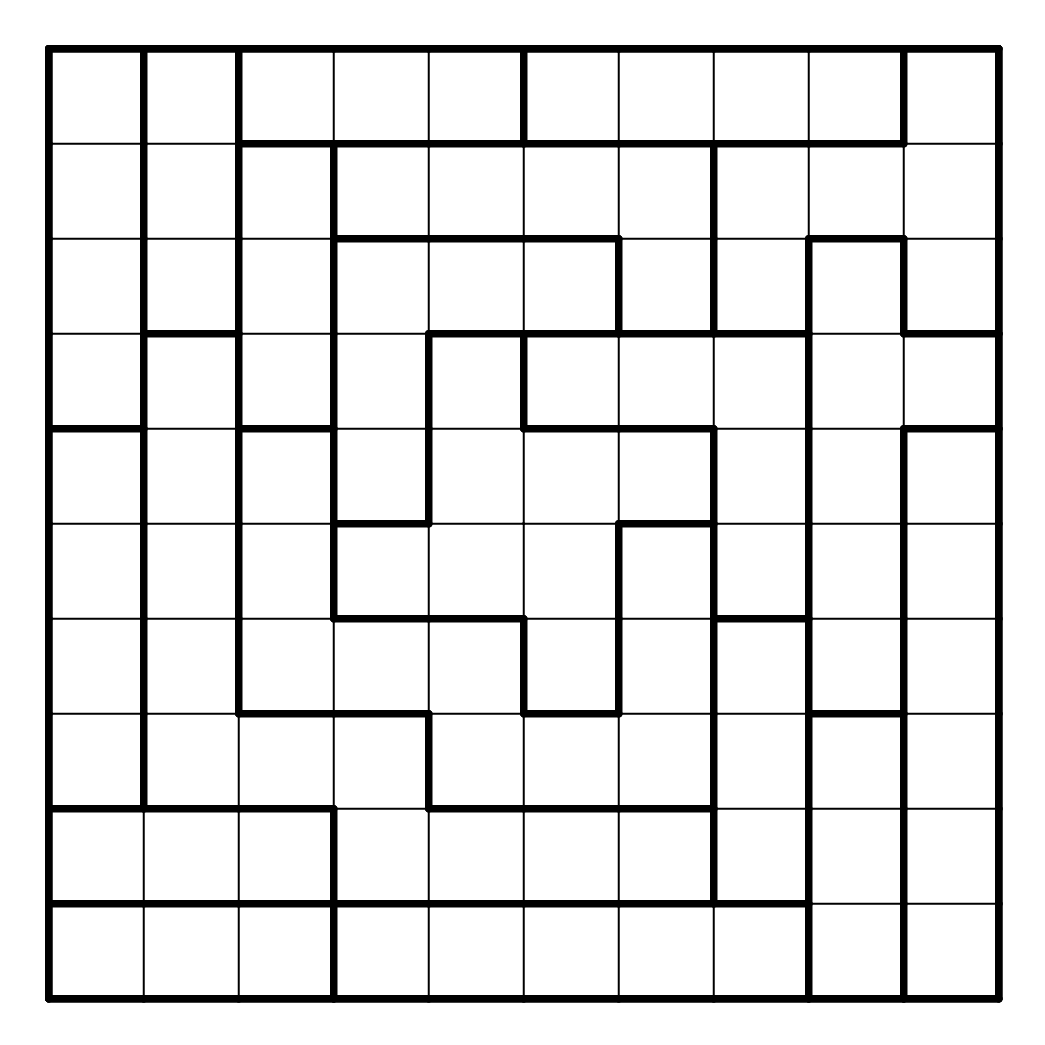
Rules: Shade some cells so that every shaded cells share an edge with exatcly one shaded cells (aka create some blocks of two consecutive shaded cells). Every region must contain exactly two shaded cells.
Another intermediate puzzle that I think logically interesting. There are no more story since I made it just like how I made my other puzzles.
Akari - 2022/07/23
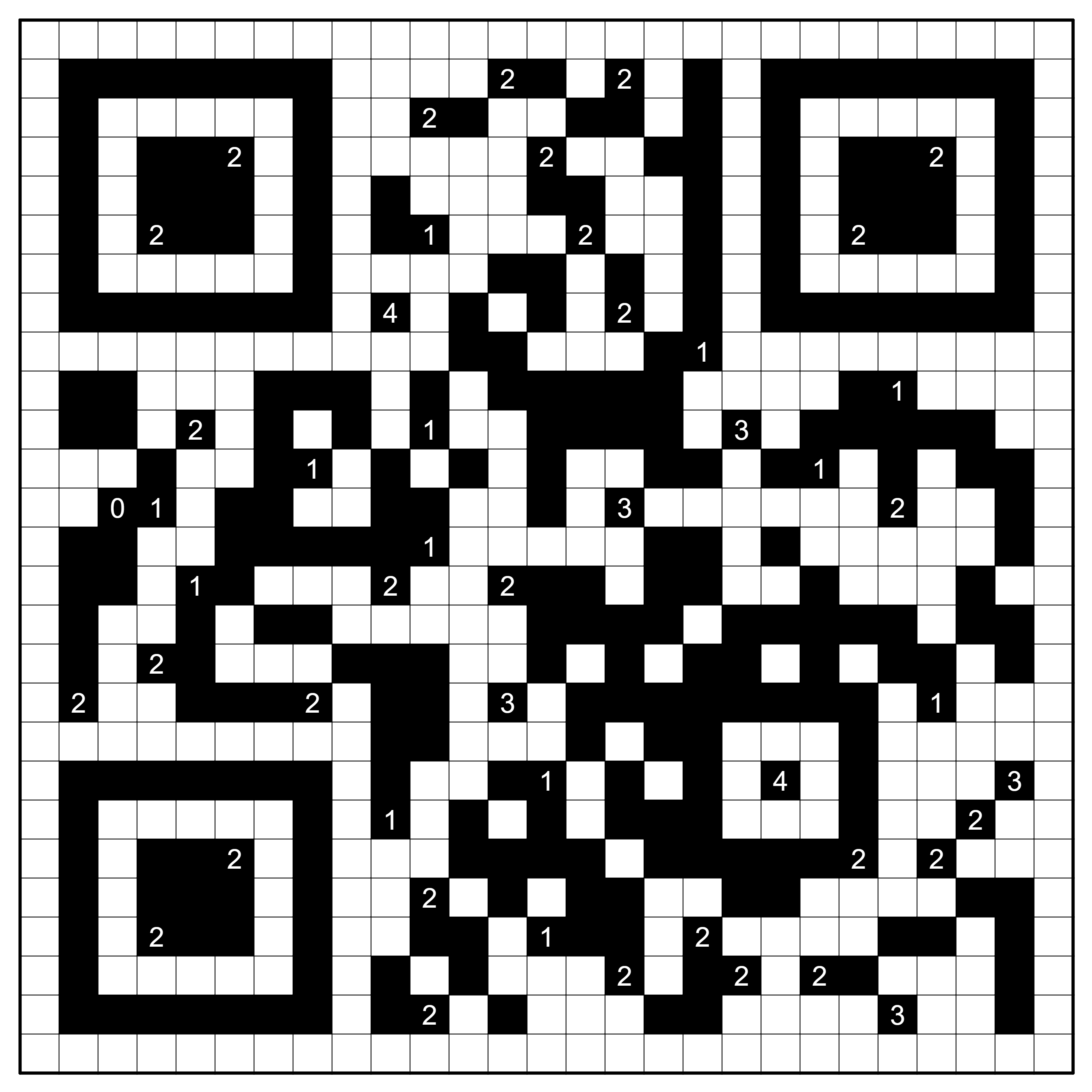
Rules: Illuminate all white cells by placing some lightbub into the grid. A lightbulb will illuminate along the row and column where the lightbulb is placed (including itself) until blocked by grid's edge or a black cell. Lightbulb cannot be placed on black cell. A black cell with number indicate the number of lightbulb that share an edge with the black cell. Two lightbulb must not illuminate each other.
Don't scan it :-)
Rongrong (Ringring variation) 2022/05/04
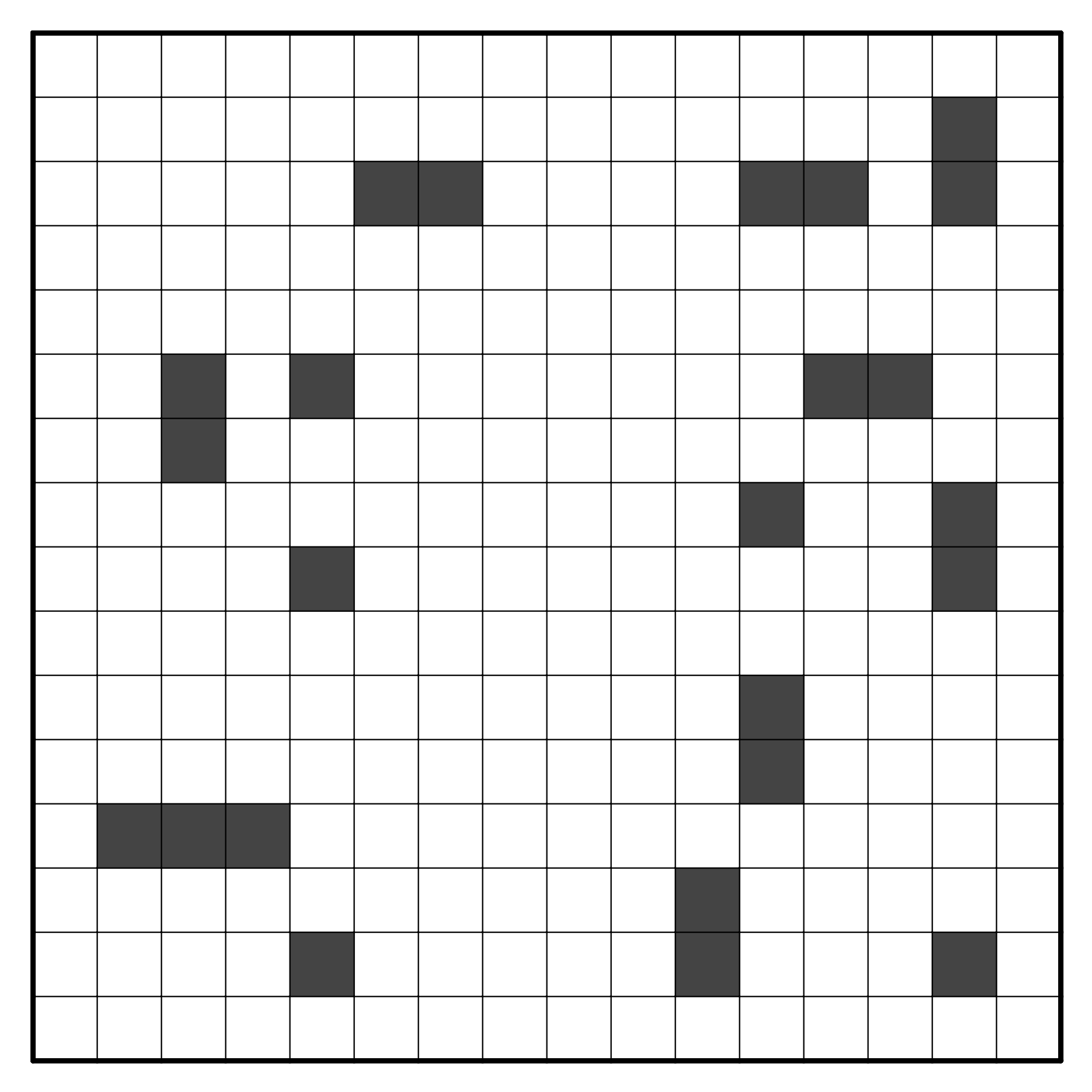
Rules: Fill empty cells by drawing rectangles that consist of horizontal and vertical lines between cells centre. The sides of two different rectangles may intersect, but not overlap. Two different rectangle cannot touch each other by the corner. Additionally, if two rectangles intersected, both of them must be a square shape.
I think line drawing puzzle like Ringring have so much potential to be more interesting with some variation. I actually came up with the idea of Ringrong (or whatever I wanna call it) first, which had Ringring rules with additional rules: every intersecting rectangle must be one square and one non-square rectangle. However, I think my Ringrong puzzle was too easy. Then, I naturally think of Rongrong (again, I just made up the name), with Ringrong rules and the change of additional rules: every intersecting rectangles should be in form of square. I don't know if someone already came up with this idea, which I believe so since it's sounds pretty general, but I hope you enjoy this one!
Minesweeper - 2021/12/15
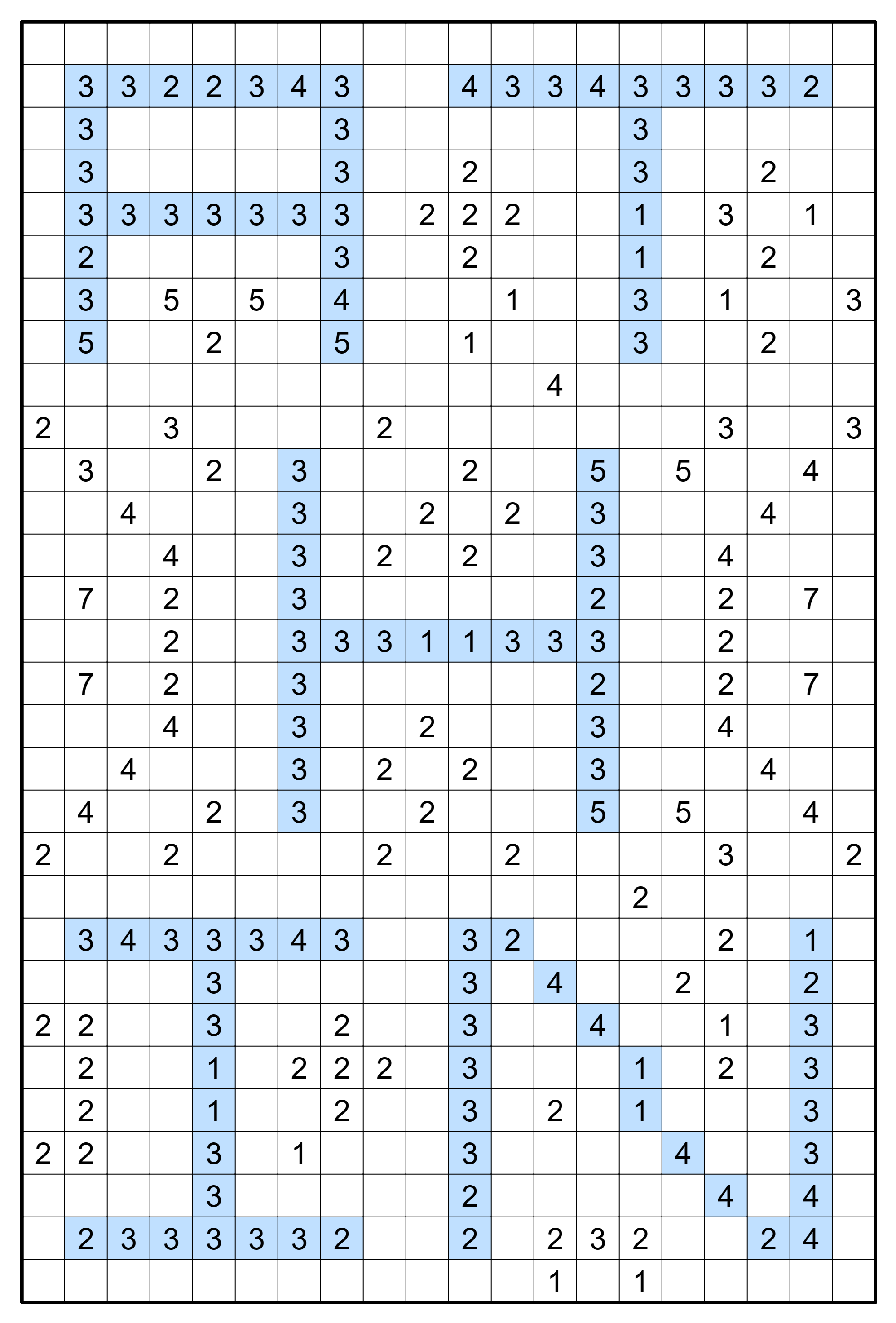
Rules: Place a bomb into cell with no more than one bomb per cell. Number on cell indicate the amount of bomb neighbouring (up to 8) that cell. Bomb cannot be placed on numbered cell. Coloured cells are just for cosmetic and have nothing to do with the puzzle.
This puzzle was dedicated for my friend who introduced me to puzzle, because I had the obligatory feeling of making dedicated puzzle for him. Actually, this is not the first puzzle I made for him, but the older one was trash. At least I put more effort for this one compared to the previous.
Kropki (Thermometer) - 2021/09/03
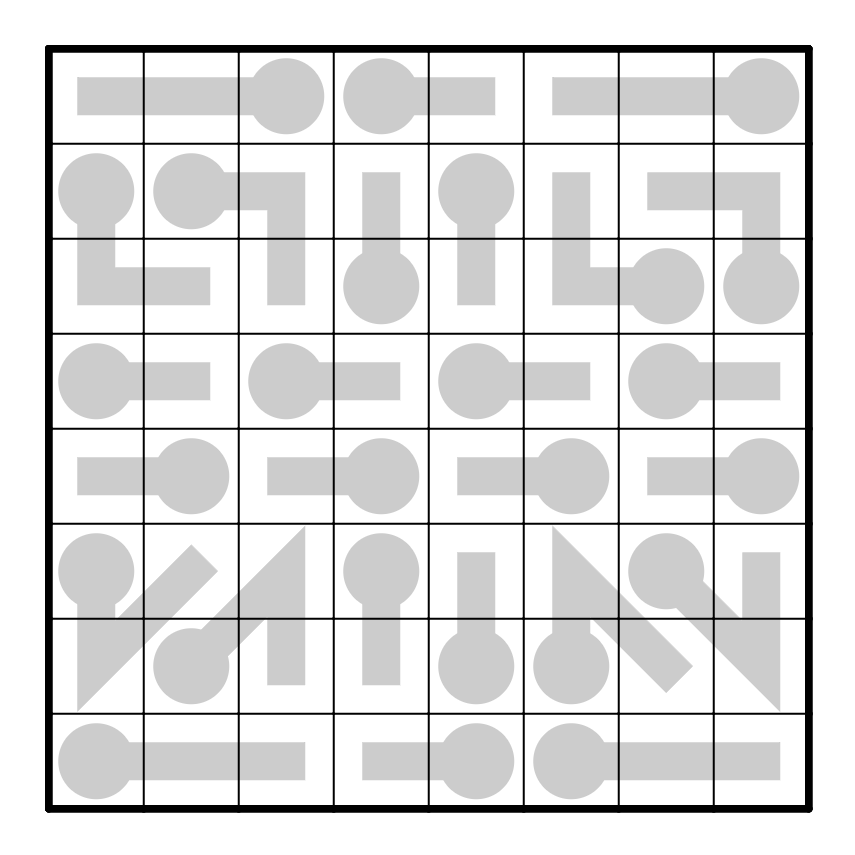
Rules: Fill the grid with 1-N, where N is the size of the grid, so that every row and column contain no repeating digit. Every two neighbouring cells with consecutive digit marked by white circle and every two neighbouring cells with 1:2 ratio marked by black circle. Aditionally, number along thermometer must be strictly increasing from bulb to end.
This is a puzzle I made for KPK 2021. I was messing around a bit with the thermometer, and I found something interesting to put a number by global deduction. However, I think this is also one of the hardest puzzle I ever created. The point weigh from the competition also says so.
Country Road - 2021/08/17
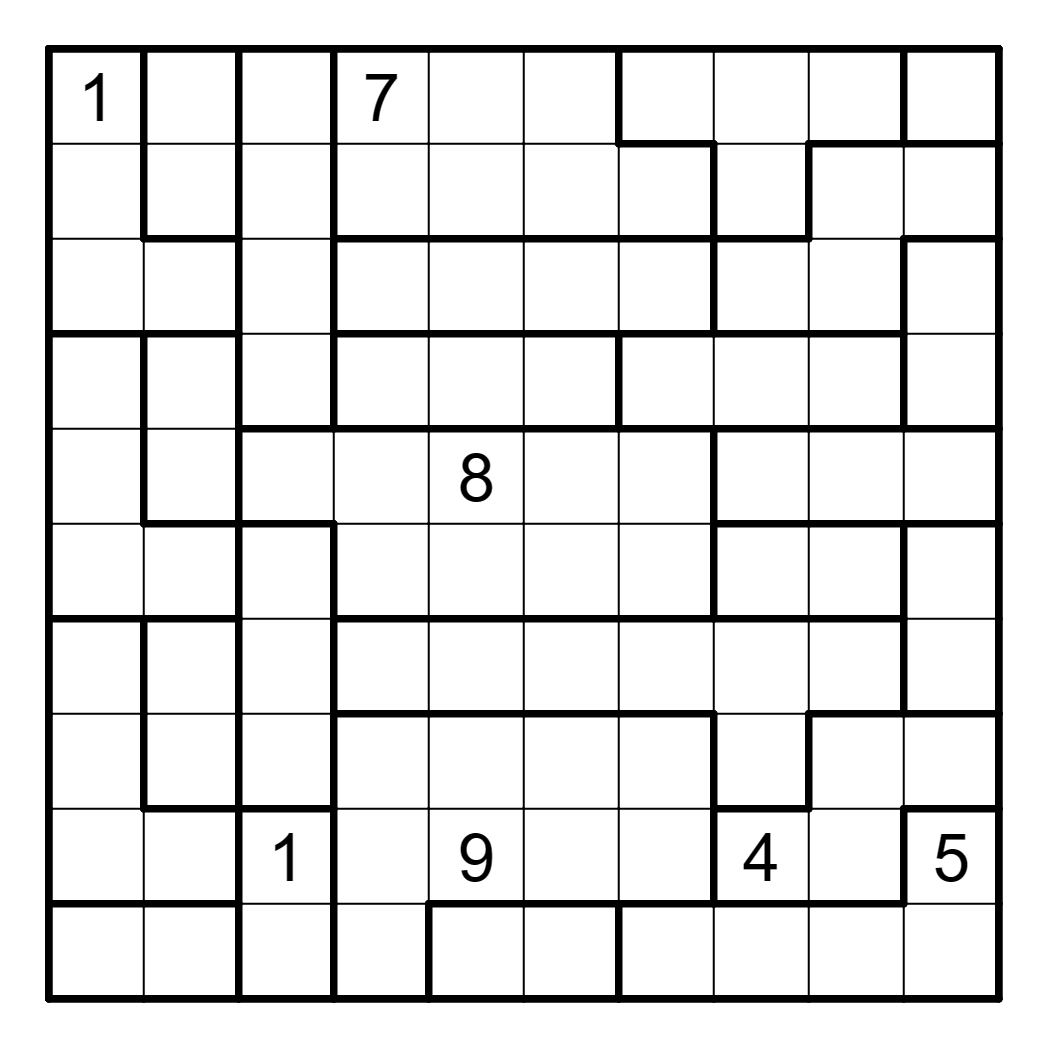
Rules: Create a single closed loop through some cells such that every region visited by a loop exactly once. The number in region indicate the amount of cells visited by the loop on that region. Two cells which are not visited by loop cannot share an edge if they are from two different region.
I made this for Indonesia Independence Day, and I believe this is my first Country Road puzzle, or at least the first one I set that I can remember. I already fall in love with Country Road at this time, so I can't be so sure.
Blocking Doppelblock Skyscrapers - 2020/12/11
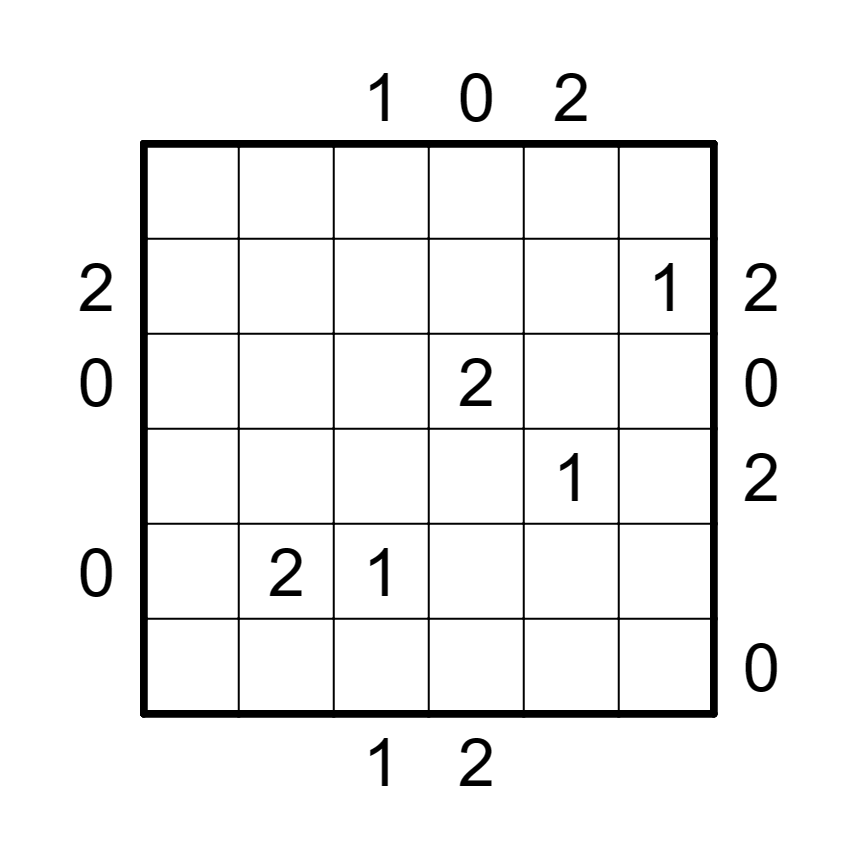
Rules: Shade some cell so that every row and column contain exactly two shaded cells. Then, place digit 1-4 to the grid so that every row and column contain no repeating digit. Every number on the grid indicate the height of building, in which the higher building hides the lower building on corresponding direction. Number outside the grid indicate how many building can be seen from that direction. A shaded cells always block all building from corresponding direction.
This is my first puzzle I ever created. Very simple, very easy, but this is my first step to the journey of puzzle setting. I wanna messing around with 2020 and 2021 because I want to post it on new year. However, I'm getting too excited to post it, so I posted it on 11th December instead, lol.